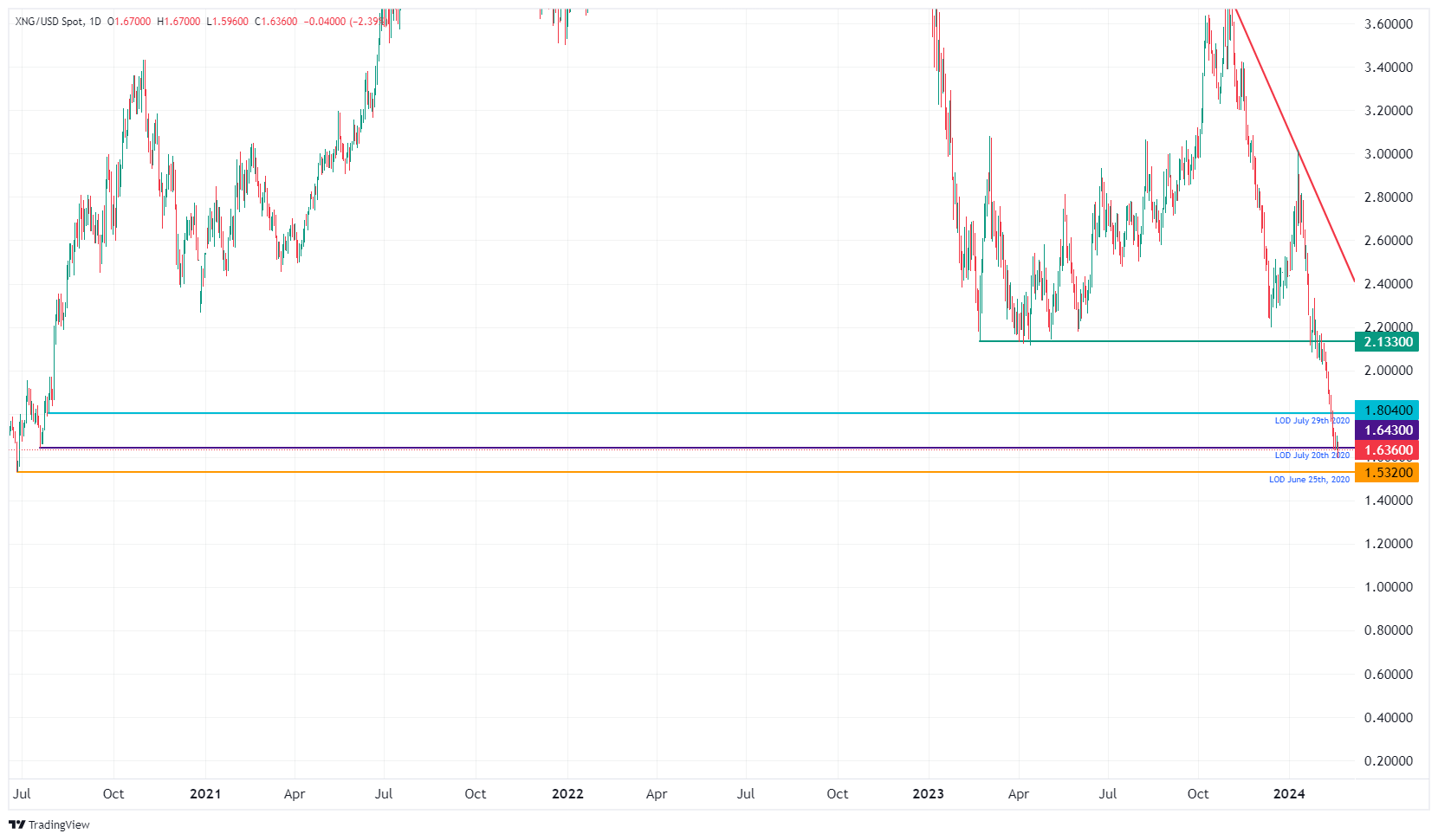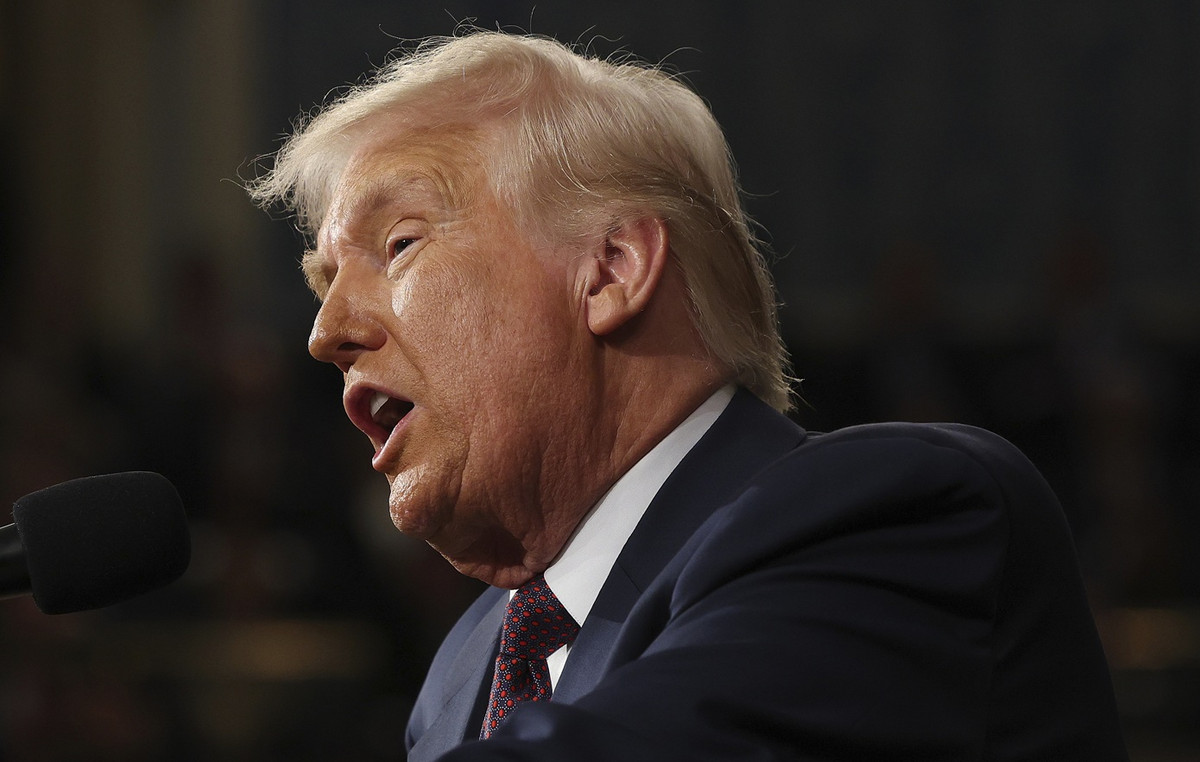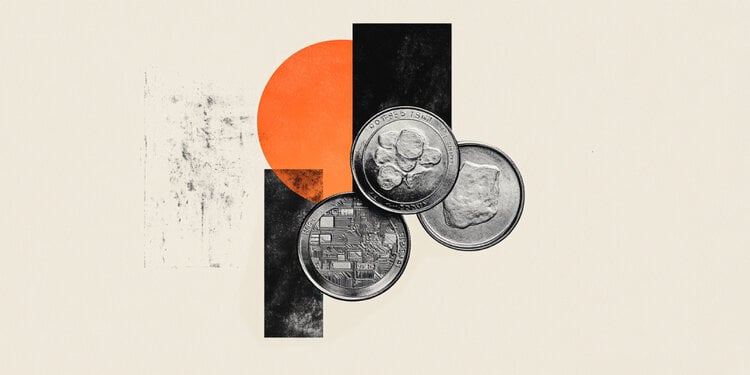- Natural Gas falls below multi-year low and marks a new three-year low.
- Traders are sending Gas lower as tepid demand is outweighing rising tensions.
- The US Dollar Index remains flat above fundamental support with the US closed for holidays.
He Natural Gas (XNG/USD) trading around $1.63 and failing to catch fire after Iran accused Israel of blowing up one of its vital gas pipelines last week. The New York Times reported that Iran had evidence that Israel was behind the attack. Meanwhile, Israel is increasing pressure on Gaza and Hamas by demanding the handover of the last hostages before Shabbat, in two weeks, or it will launch another massive ground offensive.
For its part, the US Dollar (USD) is trading stable at a fundamental support level in the US Dollar Index (DXY). Since US traders will not be in the market this Monday due to President's Day, it seems that the low volumes will not be able to really move the needle here. Traders will focus on the release of the US Federal Reserve's January meeting minutes on Wednesday, and several US buy indices on Thursday, which could make some moves for the USD.
Natural Gas is trading at $1.63 per MMBtu at the time of writing these lines.
Movements in the Natural Gas market: The agreements with Qatar show that the summer is covered
- The vice president of the European Commission, Josep Borrell, has declared that Europe has begun patrolling in the Red Sea.
- Qatar is about to announce a series of major LNG deals with both Europe and Asia, Al-Kaabi confirms.
- Korea Gas, South Korea's largest LNG group, has agreed to extend its long-term LNG contracts with Oman for another 10 years.
- High temperatures are expected in Europe for the rest of the month, which will further reduce gas demand in the region, below the average for this time of year.
Technical analysis of natural gas: Looking ahead to the next heating season
Natural Gas continues to struggle to find a foothold amid increasingly lukewarm demand worldwide. Under normal circumstances, the recent headlines about Israel and Iran would have been enough to send gas prices soaring. However, even with these potential gas supply setbacks, Europe does not need them, meaning there is still oversupply in the gas market and traders are looking for fair value in the midst of all this.
On the upside, Natural Gas faces some fundamental technical levels to return. The first stop is $1.99, the level that, when broken, saw an accelerated decline. Next, the blue line at $2.13 with the 2023 triple bottom. Should natural gas experience a sudden spike in demand, $2.40 could possibly come into play.
We must not lose sight of $1.80, which was a fundamental level in July 2020 and should now act as a stop. Should more supply emerge in the markets, or weaker global data points to even slower global growth, $1.64 and $1.53 (the 2020 low) are targets to watch. account.

Frequently asked questions about Natural Gas
What fundamental factors determine the price of Natural Gas?
The dynamics of supply and demand is a key factor that influences Natural Gas prices, and is in turn influenced by global economic growth, industrial activity, population growth, production levels and inventories. Climate influences Natural Gas prices because more Gas is used during cold winters and hot summers for heating and cooling. Competition from other energy sources influences prices as consumers may opt for cheaper sources. Geopolitical events, such as the war in Ukraine, also play a role. Government policies related to extraction, transportation and environmental issues also influence prices.
What are the main macroeconomic publications that influence Natural Gas Prices?
The main economic publication that influences Natural Gas prices is the weekly inventory bulletin of the Energy Information Administration (EIA), a US government agency that produces data on the gas market in the United States. The EIA Gas bulletin usually comes out on Thursday at 14:30 GMT, the day after the EIA publishes its weekly Oil bulletin. The economic data of the large consumers of Natural Gas can influence supply and demand, among which China, Germany and Japan stand out. Natural gas is primarily priced and traded in US dollars, so economic releases affecting the US dollar are also factors.
How does the dollar influence Natural Gas prices?
The US dollar is the world's reserve currency and most commodities, including Natural Gas, are quoted and traded in international markets in US dollars. Therefore, the value of the Dollar influences the price of Natural Gas, since if the Dollar strengthens, fewer dollars are needed to buy the same volume of gas (the price falls), and vice versa if the dollar strengthens.
Source: Fx Street
I am Joshua Winder, a senior-level journalist and editor at World Stock Market. I specialize in covering news related to the stock market and economic trends. With more than 8 years of experience in this field, I have become an expert in financial reporting.







